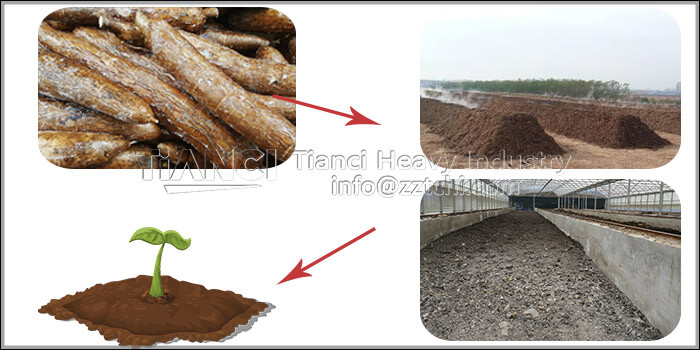Cassava residue is the by-product of cassava starch extraction or alcohol processing, mainly including crude fiber, crude ash and moisture. Indonesia, Cambodia, Thailand and other Southeast Asian countries produce a large number of cassava slag powder and cassava slag particles. As cassava residue is non-toxic, it is often used as a cheap source of coarse feed by the farms. Cassava residue can also be used as organic fertilizer after fermentation. A large number of cassava dregs can be recycled and reused by the fertilizer production machine.
There are many disadvantages in traditional cassava residue fermentation
1. Long fermentation time.
2. High labor intensity: it takes one person and half a day to stir a ton of cassava residue and mixture during fermentation.
3. nutrition can not be completely released and improved.
The modern fertilizer production machine is used for flowing water treatment to solve the utilization of a large number of cassava dregs and improve the efficiency. The following is the technological process of making organic fertilizer from cassava residue.
1. Mixing: mash the cassava residue after it is fermented and decomposed, add proper amount of urea (and N, P, K), and mix evenly through the mixer.
2. Granulation: different granulation methods are selected according to the water content and production capacity: When the production is small and the water content is high (the cost is low), the disc granulator machine is used, and the raw materials need to be dried and cooled. At last, the evenly stirred material is made into granular organic fertilizer. When the output is large and the water content is low (the cost is high), the drum granulator is used. The pelletizing rate of the rotary drum granulator is relatively high, the processing capacity is strong, the pelletizing rate can reach more than 90%, and the particle hardness is good and not easy to be scattered.
3.Screening: put the materials that have been made into the screening machine, directly screen out the materials that meet the standards and enter the packaging link, which can be sold as commodities; if they do not meet the standards, continue to granulate until the diameter meets the standards. The rest of the powdery raw materials are returned to the comminution stage and then granulated.
